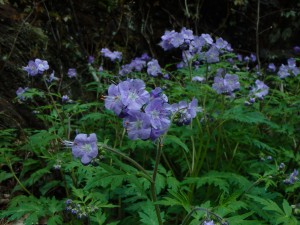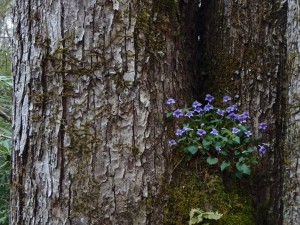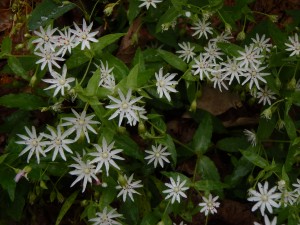
where can i purchase Pregabalin Phacelia binnatifida.
tautly We camped out in the Smokies one night, and went on two hikes, one down to the White Oak Sinks, and another the next morning along the Chestnut Top trail. Both are in the same area of the park, and at approximately the same elevation, but there really was no time for a thorough exploration, nor was there need to drive to distant parts of the park: all that was really necessary was to be out of the car. I knew most of the plants I saw, but I knew them only from books or the nursery trade: most I had never seen growing wild. My favorite were the trilliums: Trillium luteum and flexipes were everywhere, and I saw Trillium grandiflorum for the first time in the wild. The floor of the White Oak sinks was covered in woodland phlox (Phlox divaricata), and all through the park the purple phacelia (Phacelia bipinnatifida) – which until corrected I thought was a Geranium of some sort – was quite spectacular. Mr. Langdon, the park biologist I spoke with, informed me that he had measured densities of this plant approaching 2,000 flowers per 4 meters squared. When I return, though, the plant I will ask for the highest concentration of is the flowering dogwood, Cornus florida. I saw only scattered individuals, but if there’s some part of the park where they grow close together I would love to see it. They are so lovely.
The place was the woodland garden all the woodland gardeners of the world want, and a landscape designer could learn endlessly about plant combinations and plant habitat there. It’s not clear how many things I observed in the park are actually reproducible elsewhere: the park has abundant moisture, undisturbed old-growth forests, and, what we do not have elsewhere, a well-knit, functioning ecosystem, with wolves to hunt the deer. The result is a place where the mind of the mountain still dwells – a most difficult thing to put back together again, once it has gone. But nature had put life everywhere, in every little corner, and so much of it was so different from the other life – there weren’t just ten species through the park, everything was mixed up everywhere.
As we walked along we met a number of people – mostly nice old ladies – who were looking at the flowers intently. I identified some wood-betony for one group, and when I heard another group debating whether or not “it” was very close and they should keep going, or far away and they should turn back, I stopped and asked them what they were looking for.
“The trayling arbutus?” she drawled.
“It’s just around that bend,” I said. “You’re right there.”
“Oh Ah’m sorry Ah didn’t think you were here for the Pilgrimage!”
As we walked down the trail Catherine said, “I guess you should have a beard and tan shorts and binoculars around your neck and be twenty years older, that way people would recognize that you know something about plants.”
I had begun speaking like Troy full-time by now. It drove Catherine crazy, but she did laugh. “What the hayl they musta thawet ah was a moron! You wear a National Guard flayce, they all thank you probably a moron.”


Post a Comment